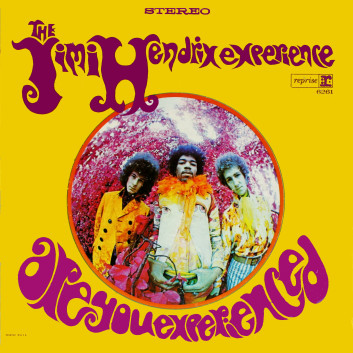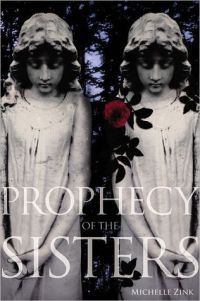
Part I: The Background
Virtuoso guitarist Jimi Hendrix—known for, among other things, playing his guitar behind his back and with his teeth (not simultaneously, of course)—played with a number of R&B groups before the Jimi Hendrix Experience. Most notably, he served as the guitarist for the Isley Brothers and Little Richard. After struggling to make it in the R&B scene, one fateful night, former Animals bassist Chas Chandler, who was now scouting talent, showed up at the club in which Jimi was performing, having been recommended to do so by Keith Richards’ then girlfriend. Impressed by Jimi’s talent, he took Jimi under his wing. Working together, they recruited Noel Redding (bass) and Mitch Mitchell (drums), and thus, the Jimi Hendrix Experience was born. The band’s debut LP, like many 60s albums, exists in two configurations: the UK version and the US version. The US version excises Red House, Can You See Me, and Remember from the running order in favour of Purple Haze, Hey Joe, and The Wind Cries Mary. The album is, without a doubt, one of the landmark albums of the psychedelic era and of the 60s as a whole.
Part II: The Music
Foxy Lady: In many ways, this song’s a perfect summation of everything that the Jimi Hendrix Experience was. It’s a funky, blues-influenced psychedelic rock tune with an edgy, muddy sound. The melodic hook lies in the guitar riff rather than in the vocals—Hendrix doesn’t so much song as he does talk the lyrics in a tone that’s simultaneously aggressive and suggested. There’s an intense urgency to the rhythm guitar, and while Hendrix does deliver a solo steeped in the blues tradition, he never overindulges. RATING: 8/10
Manic Depression: While most lyricists would fill a song about depression with complex metaphors and dense imagery, Jimi’s lyrics are rather on the nose here. That’s because the song probably isn’t actually about depression—the third verse reveals this to be nothing more than a bluesy song about heartbreak: “Woman so weary, the sweet cause in vain / You make love, you break love, it’s all the same.” Though the vocal is more melodic, once again, the hook lies in the guitar riff. RATING: 7/10
Red House: Twangy, almost metallic guitar screeches segue into a full-on twelve-bar blues. Jimi simultaneously shows off his chops while settling into a comfortable groove; while his unorthodox guitar licks bend and twist in unexpected ways, you can tell that he feels right at home playing the blues. The lyrics tell a funny little story about a man on the outs with his woman, who at the end of the song decides to turn to her sister for comfort instead. RATING: 7.5/10
Can You See Me: For a nice change of pace, the vocals take to the forefront. “Can You See Me” is a hard-rocking tune that bridges the gap between rhythm and blues and psychedelic rock. Mitch’s drumming stands out here more than anything else. The vocal, however, is scarcely melodic; at its core, this is still very much a blues song. RATING: 6.5/10
Love or Confusion: Psychedelic rock in its rawest, purest form, from the Eastern-influenced drone that kicks off the song, to the cosmic imagery pervasive throughout the lyrics, to the hazy, echoey production. If only Noel could’ve harmonized with Jimi; the latter’s bare vocal just barely manages to carry the tune. RATING: 7.5/10
I Don’t Live Today: Are we sure this one isn’t Manic Depression? For such a downer of a song, this one’s sure got a lot of energy—the refrain of “I don’t live today” is one of the most heavy-hitting on the entire album. The guitar during the solo almost sounds as if it’s being played underwater. The last (and best) third of the song descends into chaos as Jimi experiments with feedback. His dreary voice delivers monologues every now and then as the music fades in and out: “There ain’t no life nowhere.” RATING: 8.5/10
May This Be Love: While “I Don’t Live Today” is the most exciting track on the album, “May This Be Love” is the most pleasant. It’s the strongest track melodically, though the lack of an interesting progression during the middle eight feels like a squandered opportunity. The song’s lyrical imagery is centred around a waterfall. While waterfalls are inherently chaotic, when viewed from afar, the waterfall evokes a feeling of tranquility: “I can see my rainbow calling me / Through the mist of my waterfall.” This album is preoccupied with that duality of bliss and chaos, of love and confusion, of mania and depression. RATING: 7.5/10
Fire: And we’re back in business with another hard-rocking psychedelic tune. Noel and Jimi trade call-and-response vocals during the quite catchy hook. Apparently, the song was inspired by Jimi warming himself by the fireplace in Noel’s mother’s home after a show, but that of course doesn’t mean the lyrics aren’t also sexual in nature: “You say your mum ain’t home / It isn’t my concern / Just come play with me and you won’t get burned.” RATING: 7/10
Third Stone from the Sun: This is a drawn-out, experimental psychedelic piece that starts off quite well but quickly descends into that chaos. Ultimately, this is a jazzy psychedelic jam, though there are some nice mellow bits near the beginning. Once again, it’s that juxtaposition of calm and chaotic. Jimi and Chas deliver bits of science fiction oriented dialogue throughout. RATING: 5.5/10
Remember: This song wants very hard to be a pop song but is too constrained by its bluesy backbone to fully realize its potential. Nevertheless, this brief injection of melody is much appreciated. The banality of the lyrics, however, works against the song’s appeal—yeah, we get it, your mockingbird doesn’t sing anymore now that your love has left you. RATING: 6/10
Are You Experienced?: The title track is decidedly psychedelic, featuring an Eastern drone and reversed drum hits. Jimi’s solo is as incoherent as the solo on The Byrds’ Eight Miles High. And like all the best psychedelic tunes, it’s about love and drugs. The song’s closing line sums it all up very well, I think: “Not necessarily stoned, but beautiful.” RATING: 9/10
Part III: The Album

Aesthetic: This album’s raw sound perfectly captures the band’s bluesy, psychedelic aesthetic. The production manages to sound “out there” without relying on complex instrumentation or all the other varied bells and whistles of the mid-sixties era. The album cover comes in two variants: the darker, drearier UK cover, and the brighter, colourful US cover. The US cover much better encapsulates the feel of the album. SCORE: 4/5
Artistic Merit: From a song writing perspective, as mentioned previously, this album isn’t as forward thinking as those of Jimi’s contemporaries. But while the songs may be basic at their core, the trio’s unique sound and enthusiastic performances elevate this album to one of the definitive offerings of the psychedelic era. SCORE: 4/5
Flow: Here’s where the album falls short. I’ve discussed in detail the elements that make each of the individual songs rewarding upon closer inspection. But Are You Experienced? just doesn’t manage to remain fresh and engaging enough for its duration to provide that rewarding album experience. The bluesy tunes can blend together for long stretches without any apparent hooks jumping out at you. SCORE: 5/10
CLOSING REMARKS:
An interesting question to pose is whether a talented guitarist with a blues background is capable of producing an album-length work that holds together on the merit of its song writing. While Jimi is undoubtedly leagues ahead as a guitarist, the compositions on this album aren’t exactly top-notch. Rolling Stone magazine’s Jon Landau, a bit unfairly, wrote in his 1967 review of the album that “Despite Jimi’s musical brilliance and the group’s total precision, the poor quality of the songs and the inanity of the lyrics too often get in the way.” I’d argue that the appeal lies in the sonic textures, and in the theme of duality (calm vs chaotic) that recurs throughout the album. Either way, this album represents the birth of a legend. My recommendation is to pick up the CD, since it features not only the UK album but also the related singles and B-sides.
FINAL SCORE: 71
Advertisements Share this:





